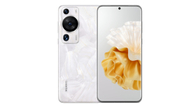Table of Contents
Huawei Nova 7, Nova 7 Pro and Nova 7 SE prices and sale date
Huawei Nova 7 5G price in China is set at CNY 2,999 (approx Rs 32,200) for the 8GB +128GB variant and CNY 3,399 (approx Rs 36,500) for the 8GB + 256GB storage option. The Nova 7 Pro price starts at CNY 3,699 (approx Rs 40,000) for the 8GB + 128GB variant and goes up to CNY 4,099 (approx Rs 44,000) for the 8GB + 256GB version. Lastly, the affordable Nova 7 SE is priced starting at CNY 2,399 (approx Rs 25,000) for the 8GB + 128GB variant and goes up to CNY 2,799 (approx Rs 30,000) for the 8GB + 256GB configuration. All three smartphone will be up for pre-orders starting today and will go on sale in China from April 28th.

Huawei Nova 7 5G and Nova 7 Pro 5G specifications
The Huawei Nova 7 series focuses on ergonomics with the curved glass on the front and back meet a very slim frame at 1.3mm. The regular Nova 7 sports a 6.53-inch full HD+ OLED display with 60Hz refresh rate, 2,400 X 1,080 pixels resolution, HDR10 support and a single punch-hole cutout to house the selfie camera. It is powered by the new Kirin 985 processor with an integrated 5G modem. The chipset is based on a 7nm process and falls just below the flagship Kirin 990 SoC. On the Nova 7, the chipset is paired with 8GB RAM and either 128GB/256GB internal storage that is further expandable via microSD card. The phone runs on Android 10 with EMUI 10.1 custom skin on top.
As for the optics, the Nova 7 boasts of quad cameras consisting of a 64MP primary sensor, an 8MP wide-angle lens, and a couple of 2MP sensors. It supports 10x digital zoom. On the front, there is a 32MP snapper in the punch-hole for selfies and video chats. The handset houses a 4,000mAh battery and supports 40W fast-charging.
The Huawei Nova 7 Pro, on the other hand, flaunts a slightly bigger 6.57-inch curved full HD+ OLED display with 2340 X 1080 pixels resolution and pill-shaped punch-hole design. Despite being the high-end model, the Nova 7 Pro ships with the same Kirin 985 SoC coupled with 8GB RAM and up to 256GB internal storage. It runs on Android 10 with EMUI 10.1 custom skin on top. In terms of optics, the Nova 7 Pro has 64MP primary camera, an 8MP periscope lens with OIS and 50x digital zoom, another 8MP lens and a 2MP sensor. On the front, there is a 32MP primary sensor and an 8MP secondary lens. The Nova 7 Pro packs a 4,000mAh battery with 40W fast-charging support.

Nova 7 SE specifications
The Nova 7 SE resembles the Nova 7, but comes with some stripped down specifications in order to be more affordable. The smartphone sports a 6.5-inch FHD+ LCD display and is powered by the Kirin 820 5G chipset instead of the newer Kirin 985 SoC. The chipset is paired with 8GB RAM and up to 256GB internal storage. Like its elder brothers, the Nova 7 SE also houses a 4,000mAh battery and supports 40W fast charging. The Nova 7 SE sports a 64MP quad camera setup as well and a 16MP selfie camera.







![[Exclusive] This is your first look at Huawei Nova 10 Pro Thumbnail](https://www.91-cdn.com/hub/wp-content/uploads/2022/06/Huawei-Nova-10-Pro-feat.png?tr=h-110,q-100,pr-true)










